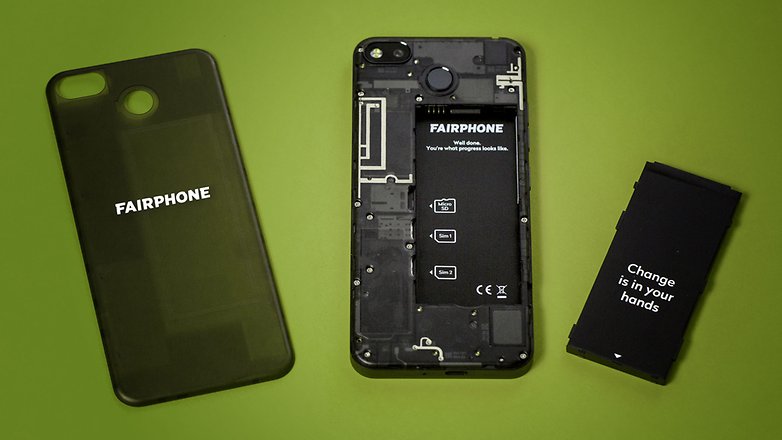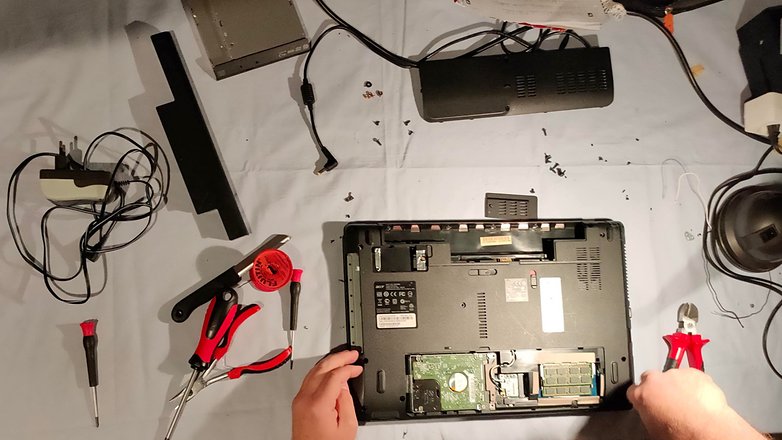I talked to several experts in the field of sustainability in technology and I am in a hopeful mood. Even if the overexploitation for the production of new smartphones continues, the number of options to opt-out is increasing.
Smartphones do not have to be mass-produced
The Hessian (a German state) company Shiftphones shows that smartphones do not have to be mass-produced. Above all, the manufacturer has taken into account from the outset that the equipment will return to it at the end of its useful life. With a deposit of around €20 per smartphone, customers are certainly encouraged to do so.
"Since the introduction of our equipment deposit, we have been able to rescue a great many appliances from drawers that would probably have been forgotten there. The deposit also motivates the users to return their old/no longer used equipment and not to dispose of it erroneously with the household waste."
(Manuel Suhre, Press Officer, Shift GmbH)
For a longer relationship, being able to self-repair smartphones is key
One thing is clear: the display and battery are the weak points of smartphones. The former breaks in falls and impacts. The latter wears out due to the chemical aging processes. So why shouldn't we be able to repair them quickly and cheaply?
Until the Galaxy S6 in 2015, the smartphones of the then most important manufacturer apart from Apple were relatively easy and inexpensive to repair. On Samsung cell phones, we were able to remove the plastic cap on the back with our fingernail without tools and replace the battery underneath. It cost around €20 on eBay, and a little more from Samsung itself, for a new one.
Today this is practically only possible with Shiftphones and Fairphones. Both brands are underdogs whose total sales are lower than the marketing budget of Huawei, Samsung, or Apple. The Hessians are idealistic and say:
"As a social business, we deliberately forego marketing measures and advertising budgets. Surpluses go into sustainability and social justice. In this respect [...] the 'alarmed generation' probably has only a rudimentary knowledge that there are companies like Shift (or others)".

But what do the majority of people who have a smartphone with a non-replaceable battery do?
Repair cafés are on the rise
I asked Philipp Sommer from the German Environmental Aid to give me at least a small glimmer of hope regarding sustainable electronics. He said that the number of repair cafés was apparently increasing steadily. At these informal meetings, professionals or technically skilled people advise people with broken rech and help them repair them.

According to the motto: "Fight back and repair your smartphones", more and more people are not so discouraged by the manufacturers to put their digital companion, which they thought was broken, back to its original form. Even if the warranty or guarantee has long since expired, there are still spare parts out there and ways to avoid buying a new one.
But what about the software?
Another sensitive point is the software. Smartphone manufacturers have virtually sole control over whether or not your device receives updates. This is critical, because without regular security patches, nasty guys and girls have an easier time stealing your data.
Unfortunately, even the virtuous manufacturers Fairphone and Shiftphones have not yet found a remedy for this. Endless support by Android is not possible, because both the chipset manufacturers and Google will apply restrictions at some point. The former no longer provide new drivers and thus leave security gaps open. The latter make requirements for a new Android version that the old devices can no longer meet. A special case was the Fairphone 2, which got the update to Android 7 Nougat by special permission despite the not fulfilled OpenGL 3.1 requirement.
The Fairphone 3 currently has "a five-year update guarantee", as was confirmed to me by the head office in Amsterdam. It would, therefore, expire in September 2024. Spare parts should be available for the same duration.
Spare parts live in a grey area
Legally, the spare parts situation, in particular, is poorly regulated. Only within the short warranty phase can a product really be repaired. Manufacturers such as Apple or Samsung often have a monopoly on spare parts and therefore sometimes offer them at extortionate prices.
This means that when I buy a smartphone, I do not know how long spare parts and software updates will be available for it. EU guidelines for more ecological design are still in the making. Philipp Sommer reports that Germany, in particular, has repeatedly been at odds with such efforts at the EU level.
France, on the other hand, is setting a good example and will soon introduce a new label. A repairability index (similar to the iFixit rating) is intended to provide consumers with an indication of whether they can repair the device on their own responsibility in the event of a defect.
We own what we buy
Smartphone manufacturers are particularly accommodating when it comes to software. With Shiftphones, Fairphone but also with OnePlus, one is relaxed. Manuel Suhre explains: "By opening or installing alternative operating systems, the customer does not suffer any loss of warranty. Our Shift-OS (based on Android) is also available as a light version (without Google services). In addition, we maintain good contacts to alternative OS communities (Lineage, UBports [formerly Ubuntu Phone, editor's note]) and provide custom ROM support," he says, "so we can get fresh patches even after the official update stop."
Purism is taking the most radical approach with its Linux smartphone Librem 5, a US start-up that has developed a completely new piece of hardware with German hardware developer Nicole Färber. It can almost actually do exactly what other smartphones do. But before you get carried away, it does have fewer apps, the battery life is poor, the performance is not competitive.
But every single circuit of the hardware built into it is openly documented. We are allowed to control exactly what is going on inside this device. This is (since the HTC HD2) not possible with any other smartphone in the world. When it comes to the latest devices with a modem driver, we usually look at a black box and are not allowed to look at what data the smartphone is transmitting to whom at what time.
Admittedly, the Purism project does not focus on ecology, but it touches on the same theme: if we really control what we own, we will be happy to use it for a long time. And the eco-balance of an elaborately manufactured device improves the later it is replaced by the next one.
Product cycles tend to be shorter these days
Unfortunately, this asymmetry is also accepted by the legislation. Nobody but the manufacturer is allowed to control the inner mechanisms of a smartphone and everyone agrees with that. Nobody else can produce the spare parts or is allowed to sell them and even that seems to be okay.
In the meantime, really good smartphones themselves now only cost around €250. This is only slightly more than a new display for the Galaxy S9. Manufacturers are undercutting their prices with new, good models in this price segment, while the top models are running out of arguments for their surcharge. Both ends of the price scale are lined with arbitrariness. Whether the devices last longer than a year is in both cases a question of luck.
But consumption is also part of the democratic process, and we consumers must play our part in it. Manuel Suhre offers a nice closing statement:
"In the end it is always the consumer who decides. With the money in his pocket, he has more leverage and can choose mainstream or alternative. The trick is to get through to him what that alternative is."
"Smartphone" - Google News
February 19, 2020 at 07:00PM
https://ift.tt/2uXwIM1
The path to sustainability: how the smartphone market can improve - AndroidPIT
"Smartphone" - Google News
https://ift.tt/2QXWyGT
Shoes Man Tutorial
Pos News Update
Meme Update
Korean Entertainment News
Japan News Update
Bagikan Berita Ini















0 Response to "The path to sustainability: how the smartphone market can improve - AndroidPIT"
Post a Comment